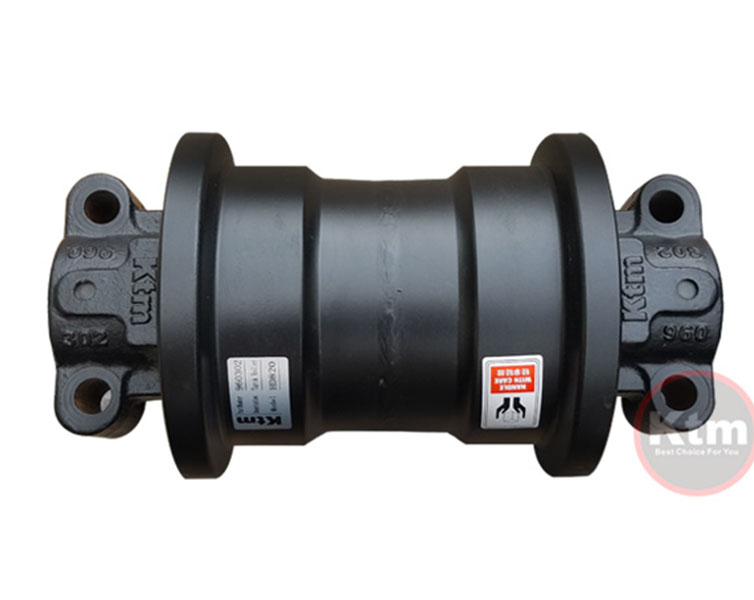
- Home
- Product
- Solution
- Brand Products
- About
- News
- Contact Us
- Language

Call Anytime
18929567376
The supporting wheel is an important component in the "four-wheel belt" (drive wheel, guide wheel, supporting wheel, support wheel, and track) of tracked construction machinery chassis. The following is a detailed introduction to the supporting wheel: 1. Main function: The main function of the supporting wheel is to support the weight of heavy machinery such as excavators and bulldozers, and guide the track to move forward along the wheel. At the same time, it can also limit the tracks, prevent them from slipping laterally, and ensure the stability and safety of the machinery during operation.
2、 Structure and Classification
Structure: The supporting wheel is usually composed of a main shaft, wheel body, shaft sleeve, outer cover, inner cover, floating seal ring, floating seal rubber ring, O-ring and other components. These components work together to ensure the sealing, wear resistance, and load-bearing capacity of the supporting wheels.
Classification: Support wheels can be classified according to different standards. According to the structure, it can be divided into single-sided support wheels and double-sided support wheels; According to their purposes, they can be divided into excavator support wheels and bulldozer support wheels. Excavator support wheels are generally painted black, while bulldozer support wheels are generally painted yellow.

3、 Technical requirements and material selection for supporting wheels
Technical requirements: The supporting wheel must meet technical requirements such as high strength, high toughness, wear resistance, and sealing. To meet these requirements, the spindle is usually made of high-quality carbon structural steel such as 50Mn, and undergoes heat treatment and quenching processes to improve its strength and hardness. The wheel body is forged and subjected to quenching and surface treatment to improve its wear resistance and load-bearing capacity.
Material selection: The rim of the supporting wheel is generally made of 45 steel and quenched to increase its hardness. At the same time, in order to ensure the sealing performance of the supporting wheel, sealing components such as floating rubber rings and O-ring seals need to be made of high-quality nitrile rubber and other materials.
4、 Working environment and performance characteristics
Supporting wheels often work in harsh environments such as mud, water, and dust, and are subjected to strong impacts and wear. Therefore, it must possess the following performance characteristics:
Reliable sealing: The sealing structure of the supporting wheel needs to be designed reasonably to prevent impurities such as mud and water from entering the interior of the wheel body, causing lubrication failure and component damage.
Good wear resistance: The rim and track surface of the supporting wheel need to be specially treated to improve its wear resistance, thereby extending its service life and reducing maintenance costs.
Strong load-bearing capacity: The supporting wheels need to have sufficient load-bearing capacity to support the weight of heavy machinery and ensure the stability and safety of the machinery during operation.
5、 Maintenance and upkeep
In order to ensure the normal operation and extend the service life of the supporting wheels, regular maintenance and upkeep are necessary. This includes checking the wear of the supporting wheels, fastening connections, cleaning debris, adding lubricating oil, etc. At the same time, it is necessary to regularly inspect and replace damaged parts of the supporting wheels based on the working environment and the usage of the machinery.
In summary, as one of the important components of tracked construction machinery chassis, the support wheel plays a crucial role in the operation process of heavy machinery. By understanding its structural composition, technical requirements, material selection, working environment and performance characteristics, as well as maintenance and upkeep knowledge, it is possible to better select and use supporting wheels, thereby improving the operational efficiency and stability of machinery.













